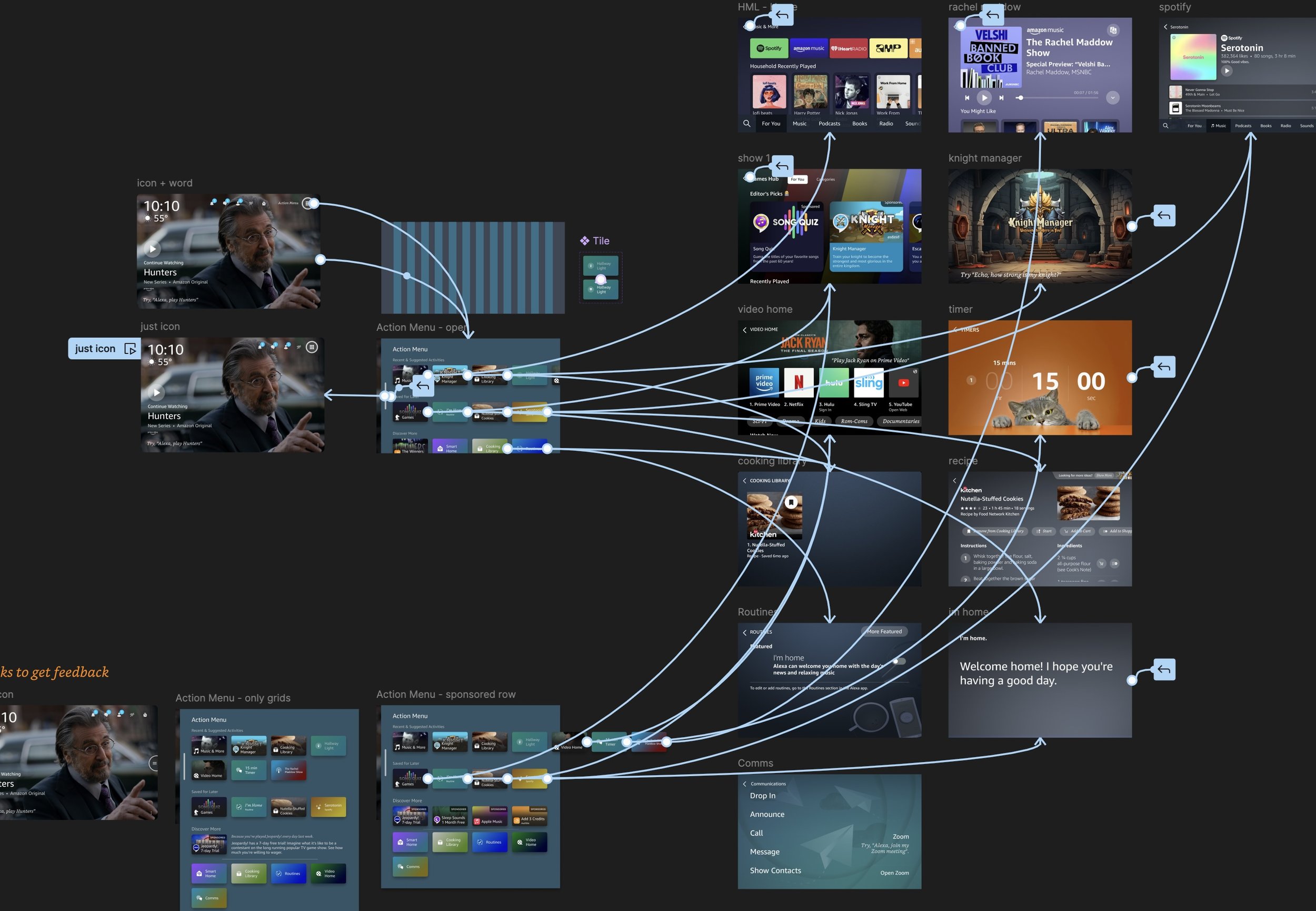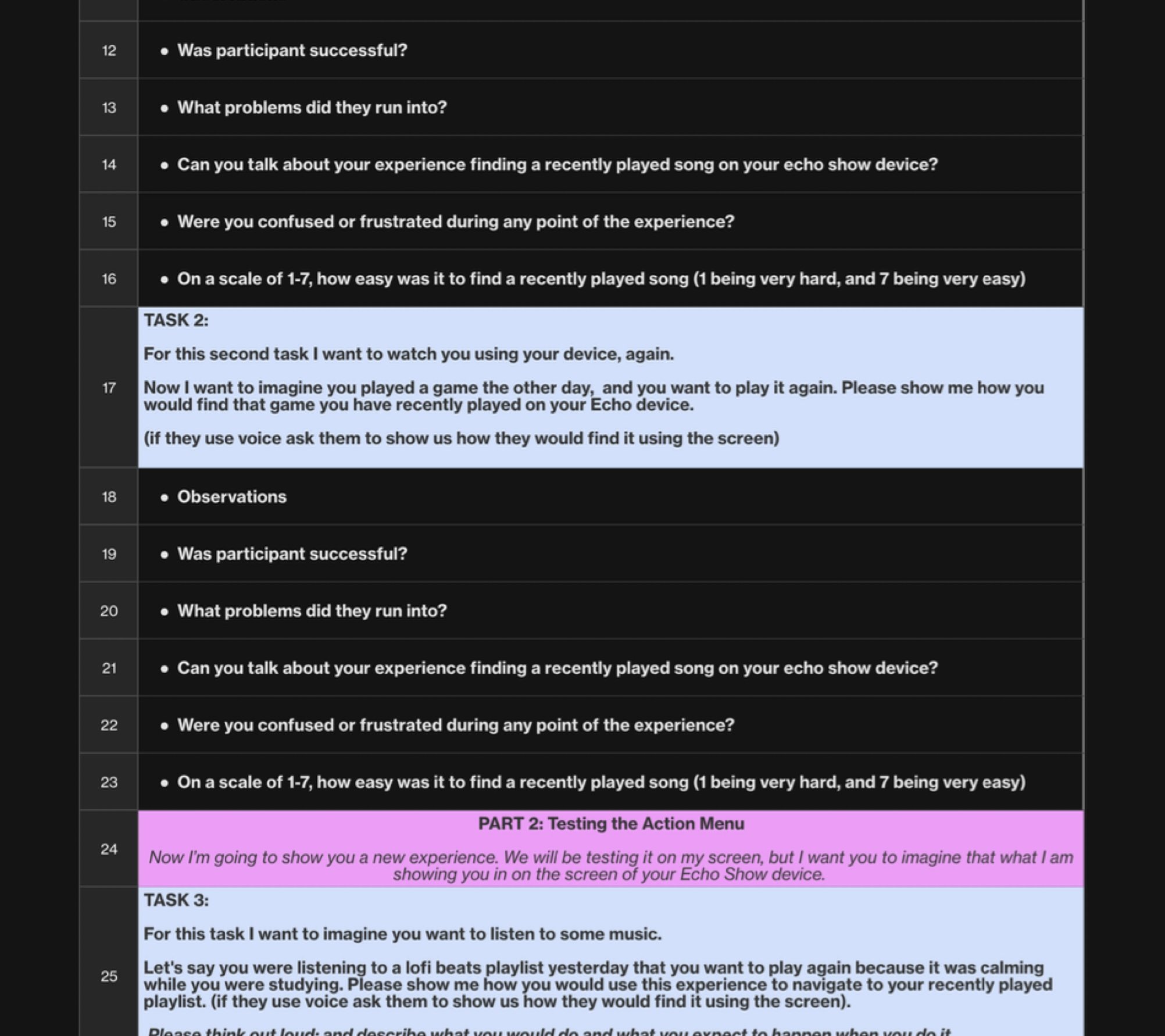
ACTION MENU PROTOTYPING & RESEARCH
The Alexa home experience struggled to address user expectations around content re-engagement. The Action Menu prototype explored how to proactively surface past interactions and smarter recommendations to enhance user retention.
Key Goals
Discover how users expect to re-engage with previous content.
Explore opportunities to integrate proactive recommendations into Alexa’s home interface.
Validate the concept with early usability research for potential broader applications.
Research
Conducted a prototype-driven study to observe user behaviors around recalling previous Alexa interactions.
Designed a wizard-of-oz prototype simulating content discovery and re-engagement flows.
Included saved content, recent interactions, and proactive recommendations.
Used placeholder content to match user expectations across diverse Alexa features like music and games.
Identified a strong preference for easily accessible, saved actions and contextually relevant prompts.
Ideation
Created an early prototype organizing content by relevance to user activity, balancing saved content and personalized recommendations.
Explored multimodal interaction opportunities to improve navigation across Alexa-enabled devices with touch and voice interfaces.
Key Learnings
Users highly value a simple way to recall and re-engage with their saved or recently accessed content.
Proactive content surfaced in familiar contexts is perceived as helpful rather than intrusive, especially for subscription-based or recurring interactions (e.g., daily Jeopardy questions).
Multimodal interactions (combining touch, voice, and visual cues) were particularly effective, suggesting further exploration for future integrations.
Note: The multimodal teams at Alexa expressed significant interest in leveraging these learnings to inform their broader strategies for proactive engagement and user retention.


